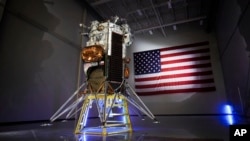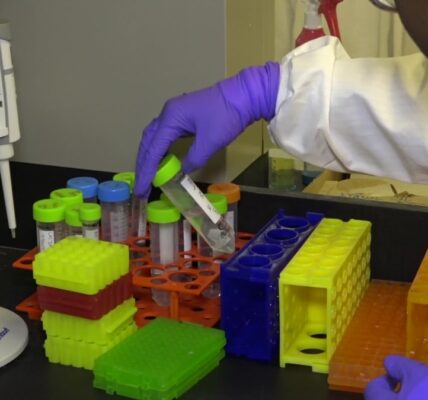The private US lunar lander has successfully landed despite a rough landing and is functioning properly.
According to a statement on the social media platform X, Odysseus, the initial American spacecraft to successfully land on the moon in over five decades, and the first from the private sector, is said to be “alive and in good condition” as of Friday.
Intuitive Machines, a Houston-based aerospace company, launched the spacecraft with funding from NASA for its moon landing mission.
Intuitive Machines received $118 million for their mission through NASA’s Commercial Lunar Payload Services (CLPS) program, which aims to strengthen the lunar economy.
The spaceship successfully touched down on the southernmost part of the moon at 6:23 p.m. EST on Thursday, near the Malapert A crater in close proximity to the pole.
During a shared webcast held by Intuitive Machines and NASA, they provided an update on their mission, revealing that they encountered complications with their navigation system. This resulted in them having to complete an additional orbit around the moon in order to switch to NASA’s laser navigation technology.
During the journey, they observed a radio blackout and upon reconnecting with the spacecraft, they received a weak signal but were able to confirm its landing.
During the expedition, another problem arose when unforeseen complications prevented the planned photographing of the landing.
The Embry-Riddle Aeronautical University had initially planned to launch a six-camera EagleCam system to capture the landing, but unforeseen circumstances caused them to alter their plans, as stated by a university representative.
Instead of being released from the spacecraft to capture the landing, the EagleCam remained connected to Odysseus upon its touchdown.
Tim Crain, the CTO of Intuitive Machines, described the spacecraft on the X platform as a “scrapper” named Odie.
Intuitive Machines announced on X that the precise whereabouts and orientation of Odysseus were unknown at first, but flight controllers have verified that Odysseus is upright and beginning to transmit data.
On Friday, the company announced on X during their “Day One Update” that they are continuously gaining knowledge about the vehicle’s specific data, overall condition, and orientation.
Some specialists are questioning whether the signal to the spacecraft is weaker than expected due to potential damage to Odysseus, or if it is being obstructed by an unknown obstacle.
Former NASA head of science, Thomas Zurbuchen, informed Reuters that the obstacle hindering the lander’s data transmission tasks could possibly be a large object such as a rock or boulder. Despite these challenges, NASA Administrator Bill Nelson praised the successful landing as a “triumph.”
Astrobotic Technology launched a spacecraft to the moon as part of the CLPS program last month. However, a fuel leak caused the mission to be aborted and the lander to crash upon re-entry to Earth.
For the following week, Odysseus will run on solar power while sending information about the moon’s environment back to Earth. This is in preparation for NASA’s Artemis mission, which aims to send astronauts to the moon by 2026.
Reuters and The Associated Press have contributed information for this report.
Source: voanews.com




